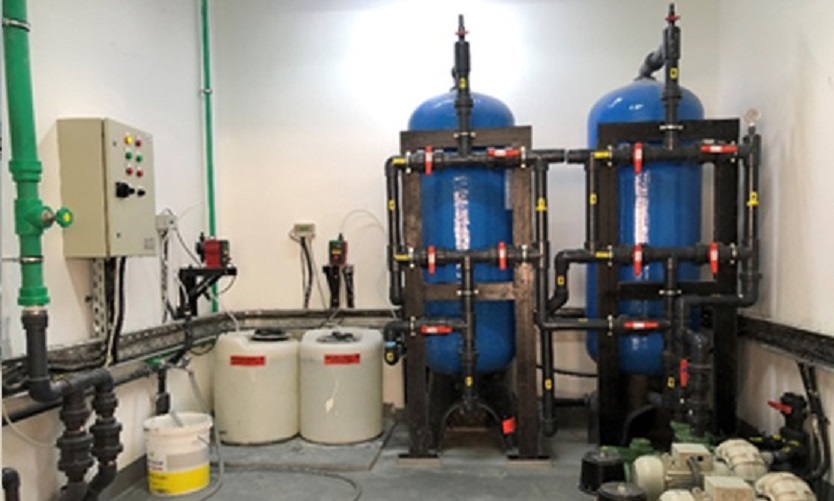
What are gray water treatment technologies?
Concerns about declining urban water supplies and environmental degradation caused by existing water infrastructure have prompted research into gray water treatment technologies and more flexible, long-term water delivery systems. Greywater reuse has been proposed to expand local water supply portfolios while reducing pressure on existing ecosystems and infrastructure.
Researchers have developed several technologies to reuse and recycle greywater. There are three basic treatment technologies for greywater treatment: physical, chemical, and biological. Besides traditional treatment methods, several advanced technologies have attracted attention in recent years, such as membrane-based technology, improved electrocoagulation, nature-based solutions (constructed wetlands), and solar-based approaches.
Gray water quality
Gray water content can be divided into two categories:
- Light gray water: Light gray water is a type of gray water that contains a low percentage of contaminants
- Heavy gray water: Heavy gray water contains a high percentage of pollutants. The element found in gray water consists of organic elements, surfactants, nutrients, and a small amount of minerals. Although gray water quality varies due to its impact on the quality of water used, water activities, and lifestyle, the main contaminants of gray water are mostly laundry and kitchen waste.
The main advantages of using gray water are:
Reuse of wastewater is essential for adequate and sustainable management of water resources. Gray water is often used as an alternative water source in many regions around the world (mostly arid), where the greatest demand for water is during drought. Promising environmental benefits of gray water include:
- Providing fresh water due to reduced need for extractions from rivers and aquifers
- Less energy used and less chemical pollution from water treatment
- Deep drainage and restore nutrients
- Reducing the environmental impact resulting from water treatment plants and septic tanks
Gray water treatment technologies
Physiochemical technology
Physical and chemical treatments of gray water primarily use filtration and disinfection methods. The filtration method is effective in reducing TSS, TDS, and turbidity. Sand filters are effective in reducing TSS and TDS levels and gray water turbidity in excess of 80%. This happens because fine sand particles can remove ions (negative charge from waste colloids) using adsorption and ion exchange mechanisms. Sand also has hydrophobic properties that can interact strongly with solids such as TSS. The sand filter will also form pore layers that can trap solids. However, using a sand filter alone without any prior sedimentation steps to treat greywater will require a shorter filter cleaning period. A sand filter is not an effective way to reduce carbon pollutants in gray water because most of the carbon elements dissolve.
Moreover, the presence of carbon-oxygen bonds increases the hydrophilic properties of carbon pollutants. In general, the effectiveness of a sand filter in reducing carbon contaminants can be increased by combining the sand filter with an activated carbon filter or by adding coagulation and sedimentation steps prior to filtration.
Physical and chemical treatments are very effective in reducing suspended solids in gray water but are less effective in decomposing carbon pollutants. Moreover, the removal of greywater nutrients such as phosphorus and ammonia is also ineffective, hence coagulation process is necessary for this treatment. The coagulation process involves the addition of coagulant chemicals such as calcium hydrochloride (CaOH2) and ferrochloride (FeCl3) to increase the removal of organic elements and disinfectants. The addition of CaOH2 and FeCl3 reduced COD and BOD levels by up to 90%. However, adding a coagulant affects the pH value due to the direct reaction between nitrate and aluminum or iron. This becomes a limitation in reducing greywater pollutants, in general, using physical and chemical treatment.
Biological treatment
Biological treatment mainly uses aeration techniques and membrane bioreactors. Aeration technology is performed by providing sufficient levels of oxygen in the water so that it helps bacteria decompose organic pollutants. In contrast, membrane bioreactor technology combines biological treatments with physical separation of solids. One method of aeration technology is the Sequencing Batch Reactor (SBR), this method removes COD levels up to 90%. This condition occurs because most of the COD in gray water is a colloidal substance, which is easier to decompose by aerobic processes.
Another method of ventilation technology is the rotary biological conductor (RBC). RBC is selected for gray water TSS and BOD removal with the ability to remove TSS levels up to 95%, while BOD concentrations up to 93% can be removed. Low solids removal efficiency from gray water due to low flock formation during the aerobic process due to low oxygen level in the water. Oxygen transport in the aeration process is affected by the concentration of gas molecules, particle size, and viscosity of the solution. Therefore, to increase the efficiency of removing physical solid particles using aeration techniques.
Advanced Oxidation Process (AOP) Processing
AOP is an oxidative chemical technique that produces predominantly hydroxyl radicals (OH*) as strong oxidants in liquid media. These OH* are highly reactive and non-selective. Two types of AOP are widely used in wastewater treatment, namely: (1) photochemical and (2) chemical.
How do I determine which gray water treatment plants are right for me?
We work with the best experts and technicians who are able to determine your needs. From studying the amount of water produced, conducting the necessary tests, and determining the size of the station, the chemicals used, and all the necessary equipment, contact us first.


























